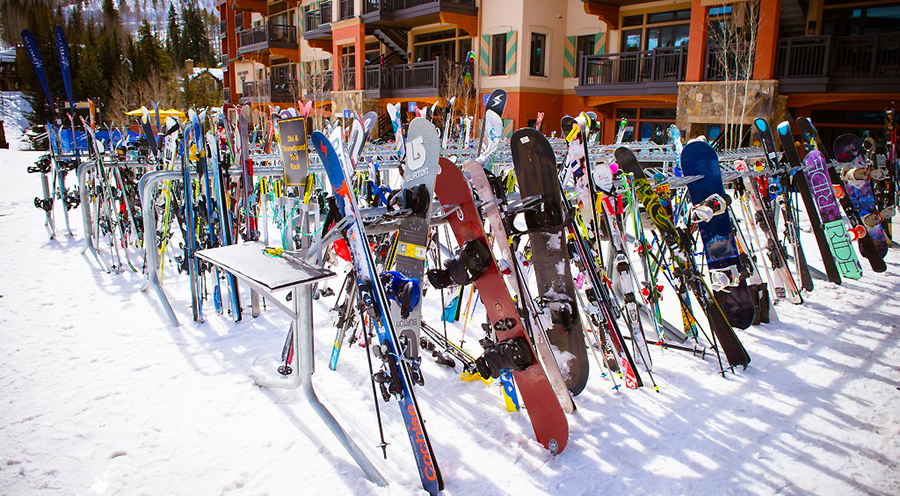Vail Resorts, Inc. reported results for the fourth quarter and fiscal year ended July 31, 2020, which were negatively impacted by COVID-19 and the resulting closure of the company’s North American destination mountain resorts and regional ski areas on March 15, 2020. Fourth-quarter results included approximately one month of operations from its North American summer and Australian winter seasons, which were also negatively impacted by certain COVID-19 related limitations, restrictions and closures.
Highlights
- Net income attributable to Vail Resorts, Inc. was $98.8 million for fiscal 2020, a decrease of 67.2 percent compared to fiscal 2019, primarily as a result of the negative impacts of COVID-19 as outlined further below.
- Resort Reported EBITDA was $503.3 million for fiscal 2020, compared to Resort Reported EBITDA of $706.7 million for fiscal 2019, primarily as a result of the negative impacts of COVID-19 and partially offset by disciplined cost management.
- Season pass sales through September 18, 2020, for the upcoming 2020/21 North American ski season increased approximately 18 percent in units and decreased approximately 4 percent in sales dollars as compared to the period in the prior year through September 20, 2019, with sales dollars for this year reduced by the value of the redeemed credits provided to 2019/2020 North American pass holders. Without deducting for the value of the redeemed credits, sales dollars increased by approximately 24 percent compared to the prior year. Pass sales are adjusted to eliminate the impact of foreign currency by applying an exchange rate of $0.76 between the Canadian dollar and the U.S. dollar in both periods for Whistler Blackcomb pass sales.
- Vail Resorts said it continues to maintain significant liquidity with $360 million of cash on hand as of August 31, 2020, and $593 million of availability under our U.S. and Whistler Blackcomb revolving credit facilities.
Commenting on the company’s fiscal 2020 results, Rob Katz, Chief Executive Officer, said, “Our results for the full year were negatively impacted by COVID-19 and the resulting closure of our North American destination mountain resorts and regional ski areas beginning on March 15, 2020 for the safety of our guests, employees and resort communities. In addition, Resort Reported EBITDA for the year was negatively impacted by the deferral of approximately $118 million of pass product revenue and related deferred costs to fiscal 2021 as a result of pass holder credits offered to 2019/2020 North American pass holders to encourage renewal for the 2020/2021 season. Following the resort closures and throughout the remainder of the fiscal year, we implemented a number of actions to enhance our liquidity and reduce costs, including raising $600 million through the issuance of unsecured senior notes, suspending our dividend for a cash savings of over $70 million per quarter, reducing our capital plan for the calendar year 2020 by approximately $80-85 million, and executing significant reductions in our operating expenses.”
Regarding the company’s fiscal 2020 fourth-quarter results, Katz said, “Results for the fourth quarter continued to be negatively impacted by COVID-19, with the majority of our North American summer and Australia ski season operations not opening until late June and early July. In Australia, we opened Perisher on June 24, 2020, and Hotham and Falls Creek on July 6, 2020, and decided to subsequently close Hotham and Falls Creek on July 9, 2020, following the issuance of stay at home orders by the Victorian government on July 8, 2020. At Perisher, our operations were negatively impacted by poor snowfall resulting in limited terrain and, as a result, limited guest capacity for a portion of July.
“In North America, our U.S. resort communities experienced increasing demand from leisure travelers throughout the month of July, with group demand negatively impacted by COVID-19 related disruptions. At Whistler Blackcomb, demand in July was below our expectations due in part to travel restrictions, with the Canadian border closed to international guests, including guests from the U.S. We maintained rigorous cost and liquidity controls throughout the quarter. Resort net revenue for the fourth quarter declined $167 million compared to the prior year while Resort Reported EBITDA declined $43 million over the same time period, reflecting $124 million in net cost reductions driven by a combination of reduced seasonal labor and expenses as well as significant overhead cost-saving actions.”
Regarding the company’s 2020/2021 North American winter season operating plan, Katz said, “We were pleased with the visitation we saw this summer at our U.S. resort communities from leisure travelers. We believe this speaks to the current preference of travelers for outdoor experiences, locations they are familiar with and, for many, the option to drive to our resorts. As we approach the 2020/2021 North American ski season, we are committed to providing a comprehensive on-mountain experience, following our historical practice of opening as many lifts and as much terrain as soon as possible. We will be focused on the guest experience while also prioritizing the health and safety of our guests, employees and resort communities. On August 27, 2020, we announced an operating plan that we believe will enable us to operate safely and consistently across our 34 North American ski resorts throughout the season, including the implementation of a reservation system for our guests that gives preference to our pass holders, limitations on lift ticket sales, limitations on our dining facilities and other changes to our operations. We expect these operating plans will help enable a safe and successful ski season but will also negatively impact our fiscal 2021 financial results. It is difficult at this time to fully assess the financial impact we may experience related to our operational and capacity plans, given continued uncertainty regarding the ultimate visitation to our resorts and any positive or negative changes which may be required to our operations based on new information and potential impacts from COVID-19.”
More details on fourth-quarter results are available here.
















